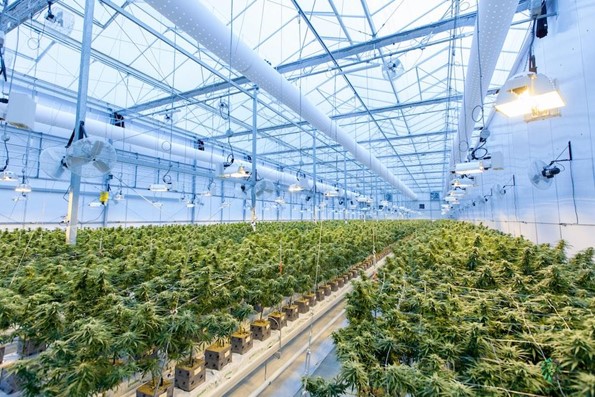Environmental Monitoring: Quick Guide

As data logging technology drives innovation, one area that has seen tremendous transformation in the last few decades is environmental monitoring. But have you ever wondered what environmental monitoring is all about?
If so, then you’ve come to the right place.
In this quick guide, we’ll provide an overview of environmental monitoring – what it is, who needs it, and why you should implement it within your organization.
Environmental Monitoring Defined
Environmental monitoring refers to a set of tools, techniques, or processes designed to observe and capture environmental data (such as temperature, pressure, and humidity) over an extended period of time and to monitor for potential excursions in these conditions.
The primary objective of environmental monitoring is to protect assets from inconsistencies in the conditions, ensuring product safety and compliance with regulatory requirements. Monitoring typically involves the surveillance of mission-critical, controlled environments like clean rooms, manufacturing facilities, laboratories, autoclaves, shipping containers, and freezers, to name a few.
In practice, the monitoring system consists of an array of data logging devices, automated analytics tools, connectivity technologies, and much more. Together, they measure, record, and document target environmental parameters, making sure collected data is readily accessible for the relevant personnel to collate, analyze, and generate actionable reports and insights.
According to Dickson, environmental monitoring systems can also be configured to work much like alarms, alerting organizations as specific conditions like vaccine temperature deviate from their recommended range.
By receiving real-time alerts, the designated people can take the necessary corrective measures, by using esg framework, before products or other assets are impacted.
Why Should an Organization Implement an Environmental Monitoring System?
In most organizations, environmental monitoring programs have well-documented guidelines that detail exactly which parameters are being monitored. They also specify who is responsible for each monitoring aspect, the specific strategies, overall objectives, and time frames. But why should you implement a monitoring system in the first place?
Environmental monitoring offers a plethora of direct and indirect benefits:
1- Regulatory compliance
Most companies that incorporate environmental monitoring into their production, storage, or distribution operations are usually required by law to follow a set of regulations. Often, they operate in highly regulated industries, where product safety and quality are mandatory. They may deal with sensitive products (e.g., vaccines, drugs, chemicals, etc.) whose quality and efficacy could be compromised by environmental factors.
Digital logs and continuous environmental monitoring can help these organizations easily meet regulatory requirements tied to their products. Having historical and real-time data on critical conditions can provide regulatory agencies with verifiable documentation on consistency and proof of how problems like temperature excursions are handled. In addition, environmental monitoring helps companies minimize the risk of failing both impromptu and scheduled audits, and helps prevent companies from falling out of compliance.
In industries like pharmaceuticals, where the FDA and other federal agencies conduct regular audits, failure to pass can result in reputation-tarnishing citations or costly fines that can run into millions of dollars. For example, the monetary penalty for FDA non-compliance can rack up to $10,000 for each day you remain non-compliant or until you rectify the situation.
2- Protecting assets
When it comes to the protection of critical assets like medical devices, drugs, or vaccines, environmental monitoring can provide numerous advantages. Because monitoring systems keep track of essential conditions, you can ensure your products—like vaccines, for example–are consistent throughout the process, from manufacturing facility to doctor’s offices where they are administered.
For instance, many vaccines are usually required to be kept at temperatures between +2⁰C and +8⁰C during storage and in transit to ensure they remain safe and effective. However, current Covid-19 vaccines, such as Moderna and Pfizer-BioNTech vaccines, require extremely cold temperature storage. These temperature-controlled assets may become denatured and ineffective if the temperatures become too hot.
The good thing is, data loggers and other monitoring systems monitor and document critical environmental parameters and alert pharma companies to any changes that may compromise the product. As such, the system helps prevent vaccine damage and spoilage. And, by avoiding vaccine wastage which is reported to be happening to up to half of the global vaccine shipments, they literally safeguard against asset loss.
3- Environmental monitoring can reduce operational costs
Environmental monitoring systems can save your organization money and resources in a range of ways. First of all, these solutions provide real-time problem alerts and reduce any room for human error – both of which can prevent costly asset loss and free up staff to take care of other equally important tasks.
Let’s not forget that organizations can configure alarms such that only the right personnel are notified. This works for your organization on two levels – it ensures that corrective actions are taken by the right professionals while limiting alarm fatigue. Both advantages optimize cost savings and the efficiency of your environmental monitoring program.
4- Improves research accuracy
In most laboratories, results must be verifiable, repeatable, and reliable. Crucially, researchers must be able to know the precise conditions that produced results. For this reason, an effective monitoring system can be the difference between discovering a new drug and returning to square one, which can be exorbitantly expensive.
5- Ensures employee safety
These systems continuously monitor essential environmental conditions in critical workplace areas like warehouses, cold rooms, and labs. This ensures that working conditions are safe for the employees at all times.
Industry Examples
Who should consider implementing environmental monitoring systems? Monitoring critical environmental data can benefit a wide variety of industries, especially those that are required to for safety and quality purposes. In general, the following sectors leverage these systems to ensure product quality, protect assets, and meet regulations:
- Healthcare
- Medical device
- Food and beverage
- Pharmaceutical
- Agriculture (especially horticulture)
- Aerospace
- Transportation and logistics
- Manufacturing
- Education sector (particularly environmental research)
Conclusion
Environmental monitoring encompasses the monitoring and documentation of parameters like temperature, pressure, and humidity to ensure consistency. These monitoring systems are usually put in place to protect assets and help organizations comply with FDA regulations and other industry requirements. Environmental monitoring can protect critical assets, alert stakeholders to deviations from acceptable environmental parameters, and ensure quality of those critical assets.



















